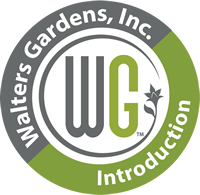Helleborus 'Sandy Shores'
HONEYMOON® Series

Common Name: Lenten Rose
Try the lovely single-flowered selections of the HONEYMOON® Series from Walters Gardens hybridizer Hans Hansen. In his breeding work, he selects for plants with notable vigor, showy floral displays with large numbers of blossoms per plant, and rich flower colors.
'Sandy Shores' bears 2½-3”, single pale apricot flowers with a lovely rosy pink color on the backs.
Hellebores are the harbingers of spring, blooming for six weeks or more beginning in late winter. They are often flowering during the Christian season of Lent, from which they get their common name, Lenten Rose. This is the perfect plant for naturalizing in moist, woodland areas where its extensive root system will spread as far as it is allowed.
128ct Plug Tray |
20ct Plug Tray |
























